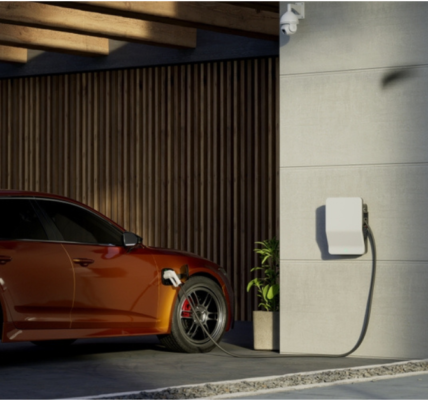As the adoption of electric vehicles (EVs) continues to grow, Honeywell has created innovative solutions to address safety concerns across the spectrum of EV manufacturing and use. The company’s lithium-ion (li-ion) battery safety sensors help play a crucial role in detecting potential battery fires, which can protect drivers. Additionally, its suite of personal protective equipment (PPE) and gas detection solutions help safeguard workers in EV plants.
With more than 10 million EVs sold around the world last year, we’re seeing how pivotal they are in making the future of sustainable travel a reality. However, achieving sustainability goals can’t compromise safety. Honeywell’s portfolio of solutions enables safer production and operation of EVs, helping to drive tomorrow’s transportation industry forward,” Sarah Martin, president of Honeywell Sensing & Safety Technologies, said.
India’s EV market is expected to grow at an impressive compounded annual growth rate (CAGR) of 49% from 2022 to 2030. India is taking rapid strides towards achieving its target of 30% EV market share by 2030. Electric scooter use is also on the rise: more than half of India’s three-wheeler vehicle registrations last year were electric and electric two-wheeler market is expected to grow by 27.3% to USD 6161 Million by 2030.
Demand for gigafactories—massive battery plants and EV factories—and jobs in these facilities, is also growing in regions around the world. In India, an additional 10 million direct jobs and 50 million allied jobs may be needed in this sector by 2030.
This growth, however, can raise safety concerns. Li-ion batteries that power EVs can experience rare but dangerous “thermal runaway” incidents, causing intense and prolonged electrical fires. Workers assembling batteries face risks like hand injuries, exposure to chemical hazards and potential electrocution.
Solutions to protect E2Ws and drivers: Honeywell battery safetyo sensors, when integrated into electric scooter battery packs, detect thermal runaway risks, enabling warning of passengers and allowing EV and scooter manufacturers to meet international battery fire safety standards.
Through a strategic alliance with Nexceris, developer of Li-ion Tamer lithium-ion gas detection solutions, Honeywell is developing sensors to detect earlier thermal runaway indicators in EV and scooter batteries. This early intervention can help avoid costly property damage or worse, injury to drivers.
Honeywell’s solutions for workers in electrification: The battery assembly process poses risks, including exposure to toxic and flammable chemicals and “arc flash,” when electric current leaves its intended path and travels through the air or to the ground. To help mitigate inherent risks associated with li-ion battery production, Honeywell offers electrical safety gear, portable and fixed gas detection technologies and PPE such as gloves, face shields and dielectric boots for high-risk areas like electrode mixing, coating, drying and cell finishing.
“As a leader in EV and scooter battery safety, we aim to drive the electric mobility revolution in the country by augmenting safety standards, offering innovative ready-now solutions and helping our customers navigate the challenges of the rapidly-evolving electric vehicle market,” Ashish Modi, president, Honeywell India, said.
As EVs and electric scooters continue to gain popularity in India, the government has introduced new guidelines for vehicle and passenger safety. The Ministry of Road Transport and Highways (MoRTH) in India set a new safety requirement[i] mandating EVs provide a signal to activate the advance warning indication to allow to exit the vehicle five minutes prior to the presence of a hazardous situation inside the cabin, passenger area or seating area caused by thermal runaway.







